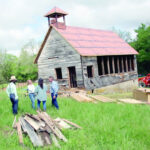Several years ago, during a late summer chat, a friend mentioned to me that she was planting green beans in her garden.
I learned to garden from my mother, an avid gardener, and all our planting was done in the spring. So, when my friend suggested planting green beans in August, I decided to give it a try.
Wow! I am so glad that I did because those fall green beans were the best beans ever!
Fall crops can be planted in early August and into September depending on the vegetable you have chosen. Fall crops have some benefits over those planted in spring. Fewer insects are out there to damage the crop and fewer insects to bite the gardener as well!
The soil temperatures are warm so germination can happen quickly and with cooler weather, the plants do not require so much water. When planting fall crops, it is recommended that the seeds be planted at twice the depth stated on the package for spring planting.
This will keep the seeds deeper in the soil with more moisture which allows quicker germination. It is also important to keep the soil watered as you wait for the seedlings to appear.
Cooler fall temperatures also mean that several plants will produce better crops. Many vegetables will be sweeter and taste better since they are not subjected to such hot temperatures as they mature.
However, fall crops will mature more slowly since they do not have as many hours of sunlight during the growing period, so they will take longer than the dates shown on the seed packets. When looking at the maturity times on the seed packets, allow about 10 days to two weeks more than the time shown on the packet.
If time is short, look for varieties with shorter maturities than others as there can be variations between varieties. If the package says that a crop will mature in 40 days, it may be closer to 54 days in the fall.
So, try to plant those seeds at least 54 days before the first frost date. In southern Missouri the first frost usually comes between Oct. 16 and Nov. 1. Plants with short maturities such as radishes and leaf lettuces may be planted two or three times, two weeks apart in August and early September, allowing for a longer period of harvest.
There are many vegetables that will grow and produce well in the cooler fall weather. Radishes, lettuce, carrots, and peas, often called cool weather crops, are excellent candidates for fall planting. Green beans are also a great choice as they will add nitrogen back into the soil and the plants can be tilled into the soil after harvest.
Let carrots fully mature before pulling them for the sweetest taste. Beets can withstand light frost, and spinach is the most cold-tolerant of all the salad greens, so it may survive light frosts as well. Kale and even cucumbers may provide a harvest before the frost arrives. Vegetables can even survive after the first frost with a row cover to protect them.
If you haven’t planted a fall garden before, choose one or two vegetables and give it a try. Maybe you have some seeds from your spring planting that you can use.
Be sure to begin by adding some compost or fertilizer to the soil, especially if you are planting after harvesting a summer crop. Take advantage of the beautiful fall weather and continue to provide fresh produce for your family. I bet you will decide that fall is a great time to garden.
EJ Adams is a member of the Barry County Master Gardeners, who are trained volunteers with gardening backgrounds ranging from hobbyist to professional, from beginner to experienced, from young adult to senior citizen. The common bond is a love of gardening, learning and sharing. Meetings are held on the first Tuesday of the month at 1 p.m. at the Cassville Library basement meeting room.






